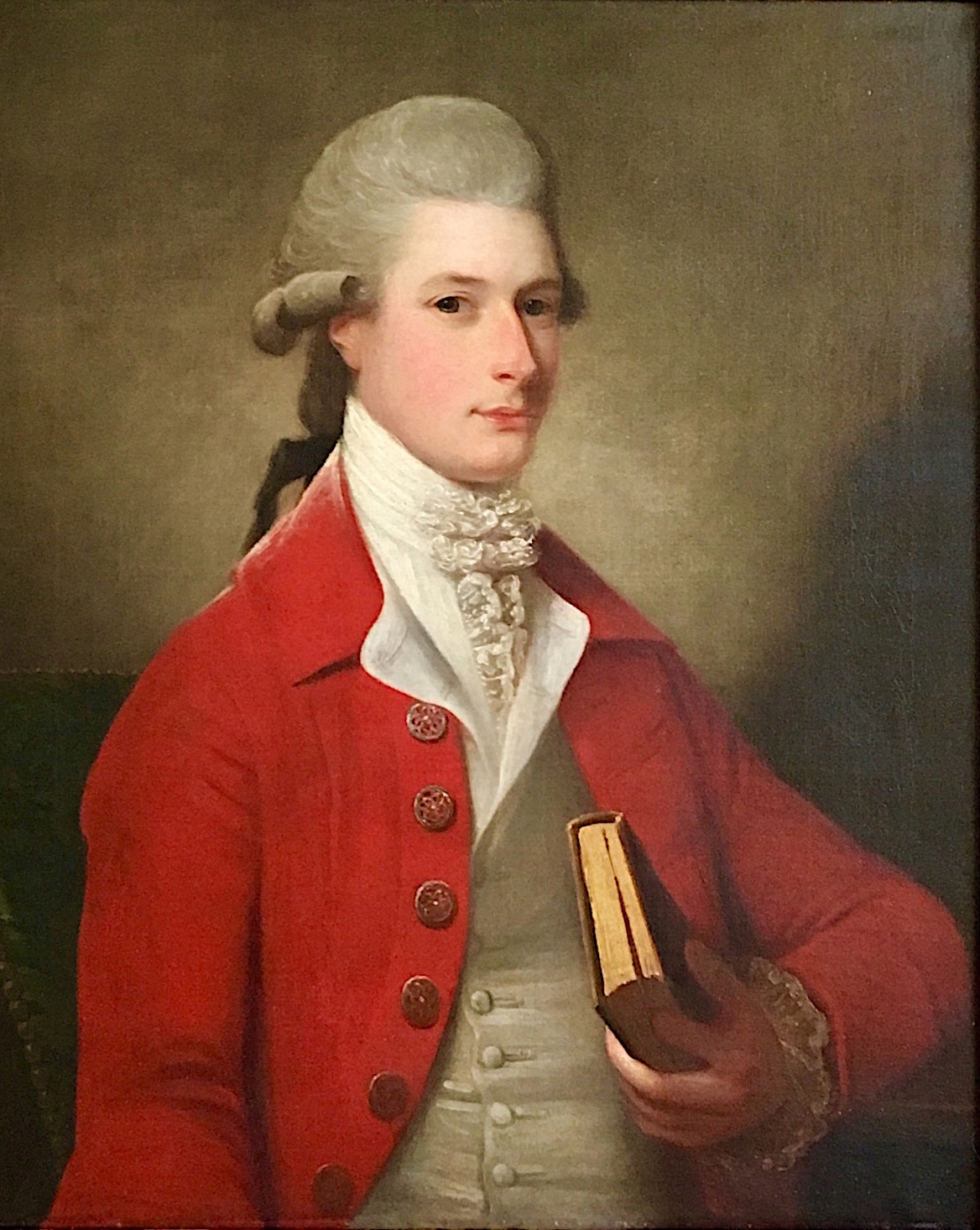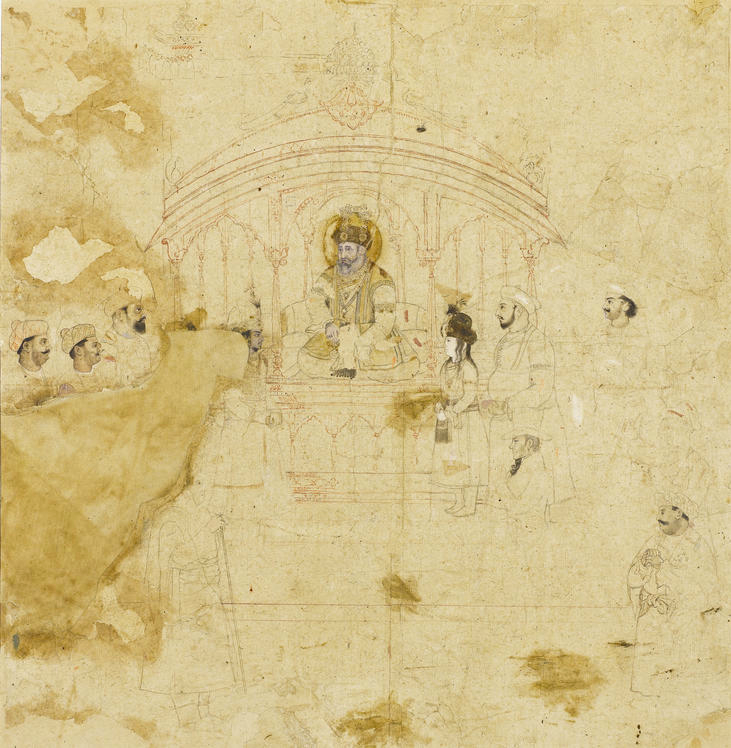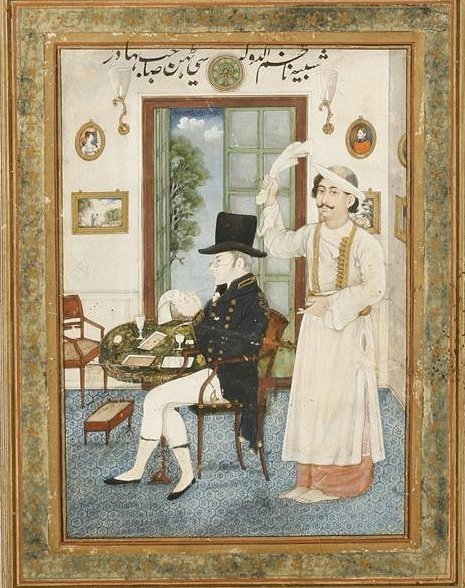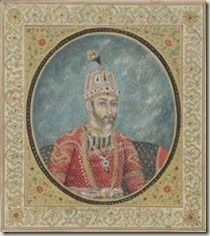|

The Honourable Sir Archibald Seton, Baron
Touch and Tullibody, Hereditary Armour Bearer to
the King,
President at the
Court of his Majesty Shah Alam II at Delhi
 Archibald Seton, Esq.
(b. 1758 d. March 30, 1818), son
of Hugh Seton (Smith) and Elizabeth Seton of Touch,
Heritable Armour Bearer & Squire of the King's body; Governor of Prince of Wales' Island and
Member of the Supreme Council Bengal, Writer in the East India
Company (1779);
President at the Court of his Majesty Shah Alam II, at Delhi
(1806);
Governor of Penang from (1811-1812). Archibald Seton, Esq.
(b. 1758 d. March 30, 1818), son
of Hugh Seton (Smith) and Elizabeth Seton of Touch,
Heritable Armour Bearer & Squire of the King's body; Governor of Prince of Wales' Island and
Member of the Supreme Council Bengal, Writer in the East India
Company (1779);
President at the Court of his Majesty Shah Alam II, at Delhi
(1806);
Governor of Penang from (1811-1812).
He was passed
the Touch and Allanton estate from his ambitious father while a relatively young man,
during the lifetime of his father who left the estate in
considerable debt. Archibald, determined to clear the estates
of debt, joined the East India Company and sailed to India in
1779.
The lure of
riches and the hope of advancement drew some of the most capable
minds of a generation to the East. Those already in India when the
Ship Stormont arrived included names that would soon play
key roles in the Company's civil and military service, including
Archibald Seton, writer of 1779. He was part of the generation
that bridged the gap between the old mercantile-minded Company of
the pre-Warren Hastings period and the new, imperialist one of the
post-Wellesley era, and developed the ideology, perfected the
institutions and trained the minds that administered and expanded
the Company's Indian empire.
He was member
of the Supreme Council at Fort William, Bengal,
Lieutenant-Governor of the Prince of Wales' Island (Penang),
President at the court of his Majesty Shah Allum at Delhi,
among the many other roles he played during his long civil
service with the British East India Company.
In 1780, in
early life, Mr. Seton went to Bengal in the civil service of
the East India Company, where he remained during the
protracted period of thirty-eight years. In this long
interval he was successively employed in the execution of
the duties of many of the most important office's in the
administration of the affairs of our great and extensive
empire, the East: and it is not more than simple justice to
Mr. Seton to declare, that his conduct in the discharge of
the functions of every situation which he filled, was
equally honourable to himself, advantageous to the State,
and calculated to promote the permanent comfort and
happiness of the subjects of the Government whose welfare
was entrusted to his charge.
After passing
through the routine of early service in India with much
credit to himself, Mr. Seton was successively entrusted with
the charge of the collection of the Revenue, and the
administration of Civil and Criminal Justice, in the
Districts of Bhangolpore and Behar. He was then promoted to
a seat in the Provincial Court of Justice in the Province of
Behar ; and on the occasion of the cession of a portion of
the dominions of the Nabob Vizier to the East India Company,
in 1801, be was removed to the same station in the ceded
provinces, and was one of the Gentlemen selected by Marquis
Wellesley to assist Sir Henry Wellesley in the discharge of
the trust of the office of Lieutenant governor of those
Provinces.
During the
first few months of Britain's governance at Bareilly in
1804, a magistrate, Fitzroy, in a dispute concerning a
garden, struck a Sayud and a cry went up, "A Seyud has been
insulted and struck; our houses are about to be
demolished..." Archibold Seton, the Governor-General's agent
at Bareilly fearing an uprising would overcome the small
British occupying force made his way to the Mosque of the
popular and respected Moftee Mahomed Ewuz. Seton was first
barred entry as he removed his shoes to enter the mosque but
was subsequently let go as he said to the guards, "Do you
not see, my friends, that I am prepared to approach a sacred
place, and meet a holy man."
 In 1806, Mr.
Seton was appointed to the office of President at the Court
of his Majesty Shah Alam II, at Delhi, and performed the
grateful duty of securing the happiness of the last few
months of the life of that interesting Prince, and also of
providing for the comfort of his son and successor, the
Emperor of Hindustan, on the accession of the latter to the
Musnud. The arrangements made by Mr. Seton for the
management of the territory to the Westward of the Jamuna,
assigned for the maintenance of the Royal Family at Delhi,
during the years in which he retained the office of
President at his Majesty's Court from 1806 to 1811, were
equally honourable to his own character, and well calculated
to promote the welfare of all classes of the inhabitants of
that territory ; and their advantages have been permanent. In 1806, Mr.
Seton was appointed to the office of President at the Court
of his Majesty Shah Alam II, at Delhi, and performed the
grateful duty of securing the happiness of the last few
months of the life of that interesting Prince, and also of
providing for the comfort of his son and successor, the
Emperor of Hindustan, on the accession of the latter to the
Musnud. The arrangements made by Mr. Seton for the
management of the territory to the Westward of the Jamuna,
assigned for the maintenance of the Royal Family at Delhi,
during the years in which he retained the office of
President at his Majesty's Court from 1806 to 1811, were
equally honourable to his own character, and well calculated
to promote the welfare of all classes of the inhabitants of
that territory ; and their advantages have been permanent.
In 1811,
Seton accompanied Gilbert Elliot-Murray-Kynynmond, 1st Earl
of Minto on the expedition against the Island of Java; and
after the successful conquest of that island, he was
appointed to the office of Governor of Prince of Wales'
Island (Penang). He was Lieutenant-Governor there from 9 May
1811 to 27 July 1812 but was absent on duty with The Java
Expedition from 13 May 1811 until the end.
From
Lieutenant-Governor of the Prince of Wales' Island, he was
promoted in 1812, by the Court of Directors of the East
India Company as reward of his long services, to a seat
in the Supreme Council at Fort William in Bengal, which he
filled with much credit for five years.
In 1812, the East India
Company had penetrated to Mughal court completely and a
Resident Officer was living inside the Red Fort, controlling
the administration of India. Coins were struck by British
Mints and name of Mughal Emperor was removed from currency.
Emperor Shah Alam II had died, for whom people started
saying: ‘Badshah Shah Alam, Az Delhi, Ta Palam’
 It
meant, Emperor Shah Alam’s rule is from Delhi (Red Fort) to
Palam (present day Delhi Airport) only. Shah Alam II’s son,
Akbar Shah II was the puppet king and Archibald Seton, a
Scottish East India Company Administrator was the appointed
Officer in Red Fort. Next in line to throne, Crown Prince
Mirza Jahangir was against British way of working. One day,
this reckless young prince of 19 insulted Seton by calling
him Lullu. Seton did not react then. Perhaps he did not
understood the meaning of the word. It
meant, Emperor Shah Alam’s rule is from Delhi (Red Fort) to
Palam (present day Delhi Airport) only. Shah Alam II’s son,
Akbar Shah II was the puppet king and Archibald Seton, a
Scottish East India Company Administrator was the appointed
Officer in Red Fort. Next in line to throne, Crown Prince
Mirza Jahangir was against British way of working. One day,
this reckless young prince of 19 insulted Seton by calling
him Lullu. Seton did not react then. Perhaps he did not
understood the meaning of the word.
A few days later, when Seton was
returning from court, Mirza Jahangir, sitting on the roof of
Naubat Khana, fired a shot at him, missing Seton completely.
While Seton escaped unhurt, his orderly lost his life. Angry
with this, British arrested Mirza Jahangir and sent him to
Allahabad fort. Back then, it was famous that a political
prisoner, who is sent to Allahabad Fort, never returns
alive.
Sir Archibald
was on his
return to his native country in 1818, at the period of his
death, and died on board the East India Company's ship William
Pitt (Capt. Graham), on the passage from St. Helena to
England on
March 30, 1818,
aged 60.
During the
long period of Mr. Seton's services, he had the happiness to
possess in succession, and in the fullest extent, the
well-merited confidence of every Government under which he
served — that of Marquis Cornwallis, Lord Teignmouth,
Marquis Wellesley, Sir George Barlow, and the Earl of Minto :
and the friend by whom this faint tribute is paid to his
memory, and by whom his virtues will ever, be revered, can
assert, from an intimate knowledge for a period of nearly
forty years, that his desire to promote the happiness of
others was uniformly enthusiastic, and that the virtues of
his heart were pure, and unmixed with any tincture of alloy.
 Archibald rose to high office,
accumulated a considerable sum of money but sadly died on his way
home before reaching Touch on whose behalf he has worked all his
life. Archibald's sister, Barbara, married Sir Henry Stuart
of Allanton and inherited the estate. Sir Henry was a well known
aboriculturist and planted many of the fine trees on Touch. He
took the name of Seton-Steuart and their family remained the
lairds of Touch until it passed to the Buchanans in 1928. Archibald rose to high office,
accumulated a considerable sum of money but sadly died on his way
home before reaching Touch on whose behalf he has worked all his
life. Archibald's sister, Barbara, married Sir Henry Stuart
of Allanton and inherited the estate. Sir Henry was a well known
aboriculturist and planted many of the fine trees on Touch. He
took the name of Seton-Steuart and their family remained the
lairds of Touch until it passed to the Buchanans in 1928.
Sir Henry James Seton-Stewart, Bart., of Touch House, was the
eldest son of Sir Reginald Macdonald Seton-Stewart, Bart., of Staffa, by Elizabeth, daughter and heiress of Sir Henry Stewart,
Bart, F.R.S., of Allanton. He was born in 1812; succeeded, as
third baronet, in 1838; and, in 1852, married Elizabeth, daughter
of Robert Montgomery, Esquire.
Sir Henry was hereditary armour-bearer
and squire of the royal body in Scotland. The heir presumptive
was his nephew, Alan Henry (born in 1856), elder son of the late
Archibald Seton-Stewart, Esquire, by Catherine, daughter of
Robert Stein, Esquire.
| 
